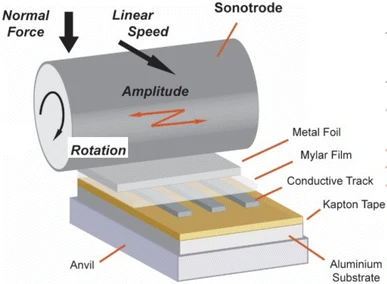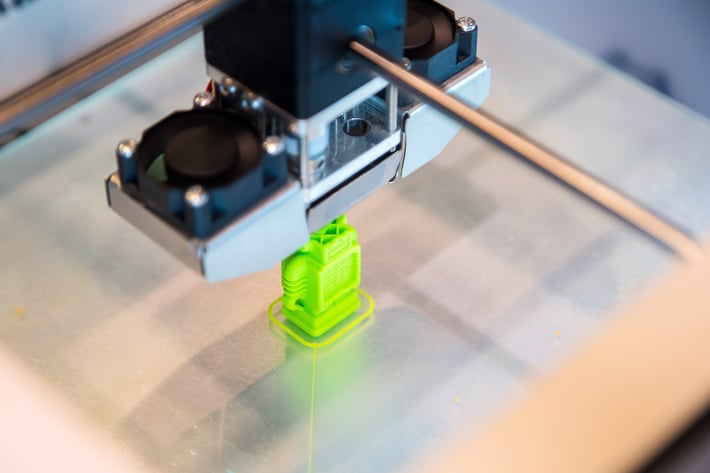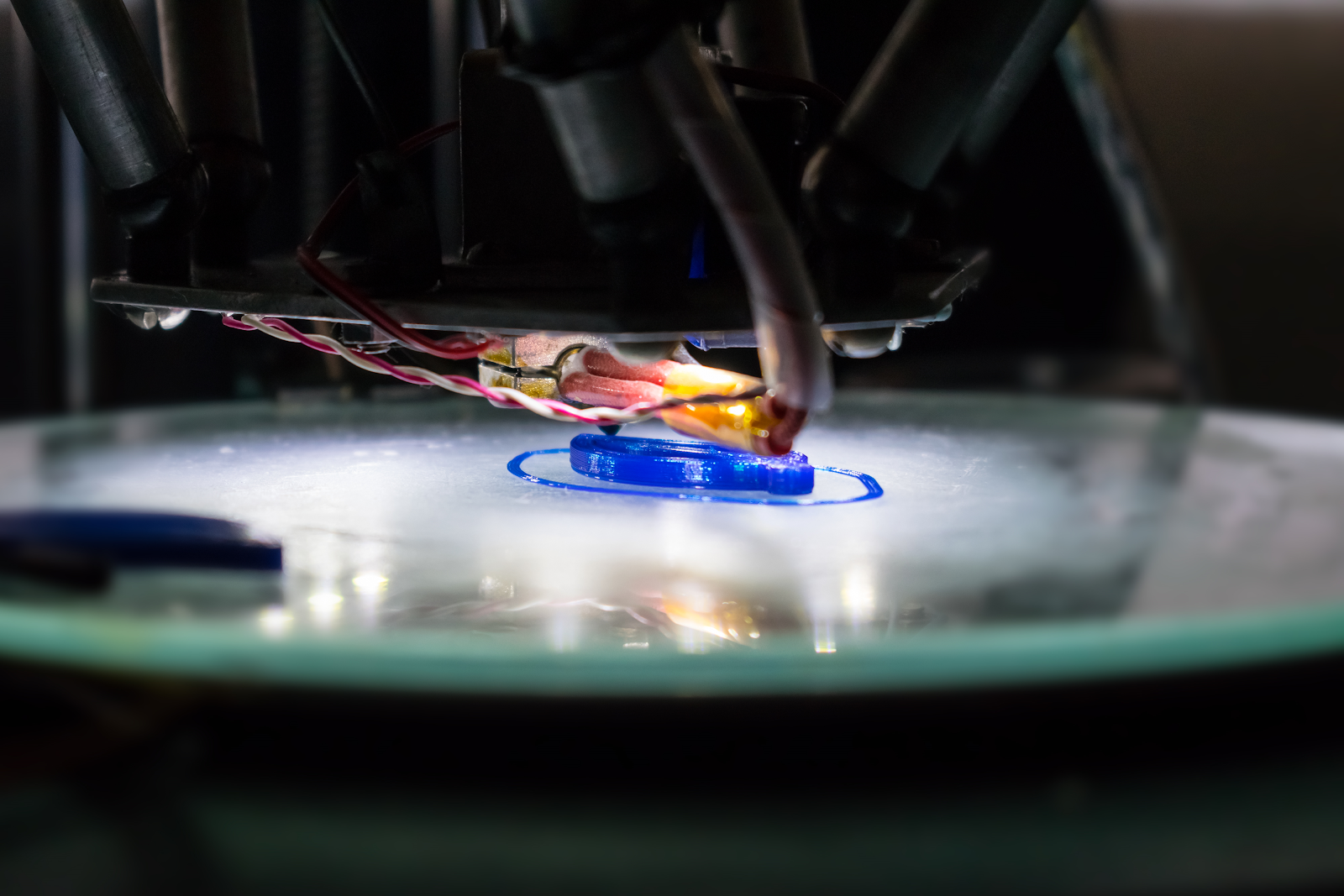Ultrasonic Additive Manufacturing (UAM), also known as Ultrasonic Consolidation (UC), is an additive manufacturing (AM) or 3D metal printing technology. UAM belongs to the ‘sheet lamination’ family of AM processes, along with Laminated Object Manufacturing (LOM).
Compared to other AM techniques, UAM uses relatively low temperatures - well below the melting temperatures of the materials used - and is used to produce metal parts rather than plastic or nylon.
A Brief History of UAM
The UAM process was developed by Dawn White, who commercialized the invention in 1999 by founding Solidica Inc. to sell commercial UAM equipment.
In 2007, Solidica collaborated with the Edison Welding Institute to redesign the tooling process to improve bond quality and expand the number of metals that could be used. The collaboration resulted in a new UAM process, known as ‘very high power Ultrasonic Additive Manufacturing.’
The partnership founded a new company - Fabrisonic LLC - in 2011 to commercialize the new high-powered UAM process and sell a new line of UAM equipment.
Ultrasonic Additive Manufacturing Explained
Like most AM processes, UAM machines create parts based on a Computer Aided Design (CAD) model. Once a model has been made, the file is ‘sliced’ into 2-dimensional cross-sections used to build the part layer by layer - more in a moment.
However, beyond the 3D modeling aspect, UAM differs significantly from other AM techniques. Where most AM techniques — such as SLS — produce parts from powdered material, UAM uses sheets of metal foil. Also, unlike other AM techniques, UAM doesn’t use heat. Instead, it uses a tool called a sonotrode to create ultrasonic vibrations that - in combination with pressure - force two layers of metal to bond together.
(Source: The Effect of Ultrasonic Additive Manufacturing on Integrated Printed Electronic Conductors, Electronic Material Letters 14, 413-425, 2018)
The manufacturing process looks like this:
- A solid metal base plate is fixed into place on the build platform.
- Metal foil is laid on top of the base plate, and the entire build platform is drawn under the sonotrode, bonding the foil to the base plate. At this point, the part is not shaped in any way.
- This process is then repeated until the bonded layers reach a predetermined depth.
- A CNC machine - similar to those used in traditional subtractive CNC machining - trims the part into shape by removing the excess foil.
- This cycle is repeated until the part reaches a specified height.
- A smaller milling tool further shapes the part and completes any internal milling required for the finished part.
- The full UAM cycle is repeated until the part is finished.
- The part is removed from the build platform, and the base plate is detached.
As you can see, UAM is actually a hybrid additive and subtractive manufacturing process, which combines the layered approach of AM techniques with subtractive CNC milling.
Ultrasonic Manufacturing Machines
The UAM process uses a line of ultrasonic 3D printing machines developed by Fabrisonic, LLC. The machines can create extremely strong bonds even between different metals. And, since the process doesn’t involve high heat, the bonding process doesn’t cause changes to the laters’ molecular structure, avoiding the brittle characteristics inherent in some other metal AM processes.
Another benefit of the Fabrisonic machines is that they can bond metals that can’t be used with other techniques, including copper and aluminum.
Of course, while the machines are undoubtedly impressive, they aren’t suitable for home use. With even the smaller R&D focused machine clocking in at just under $200,000, Fabrisonic UAM machines are only for industrial and research purposes.
Pre-Processing Models for Ultrasonic Manufacturing

Before you can produce a part using UAM, you must first go through the pre-processing phase. During this phase, the 3D CAD model of the part being produced is analyzed using specialized modeling software.
Data preparation for UAM follows a similar process to data preparation for SLS. While UAM doesn’t have the same limitations as SLS when it comes to thin walls and sharp edges, it still requires a degree of pre-processing:
- Parts that incorporate complex geometries should be simplified using a geometry simplification tool.
- Designers should use simulation modeling tools and techniques to ensure the part is suitable for UAM printing and hold up to real-world use.
Once the part has been processed, ‘slicing’ software is used to convert the 3D model into 2-dimensional layers known as cross-sections. While free applications can complete this data preparation process, professional designers are better served to use a recognized software package.
If your organization develops applications that handle pre-processing for UAM, Spatial is here to help.
With more than three decades of 3D modeling experience, Spatial provides comprehensive pre-processing capabilities and pre-built libraries that you can build into your software applications. Expand the functionality of your applications or hardware products and differentiate your offerings from competitors - without investing years of R&D to develop these capabilities in-house.
To find out more about how Spatial can help, check out our industry-proven 3D Modeling Software Development Toolkits.
Advantages and Limitations of Ultrasonic Additive Manufacturing
UAM offers three significant advantages that most other AM processes can’t deliver.
1. It can produce metal parts with ‘impossible’ internal channels.
Many parts require internal channels, often for cooling purposes. However, with other AM processes like FDM and SLS - and certainly with traditional subtractive manufacturing techniques - producing parts with complex conformal 3D flow paths is all but impossible. With the use of ‘very high power UAM,’ modern Fabrisonic machines can make parts from aluminum and copper, which helps to release heat while also decreasing weight.
2. It can bond multiple metals.
Because UAM doesn’t involve high heat, it doesn’t change the microstructure of the metals used. As a result, UAM can bond dissimilar metals without creating the mismatches and brittle structures inherent in other metal AM process technologies. A wide range of material combinations is possible.
3. It can embed sensors and circuitry.
Most incredibly, UAM parts can even be printed with internal sensors and circuitry - a unique capability in AM. This is not possible in traditional manufacturing, as the strains and temperatures involved would damage these sensitive components. With UAM, sensors can be embedded anywhere in a metal structure, giving it many valuable applications in healthcare, process control, and even the Internet of Things (IoT).
Finally, since UAM requires less hollowing than techniques like SLS, it also wastes less material.
However, all these come with a price - quite literally. As we noted earlier, the smallest machine sold by Fabrisonic costs almost $200,000. The company doesn’t list prices for its larger machines, but organizations can expect to pay a substantially higher amount for them.
When Do You Need to Use UAM?

Given its ability to bond a wide variety of different metals, UAM has clear applications in the aerospace and automotive industries. Its capability to produce parts with complex cooling channels is extremely valuable in these industries and others such as industrial manufacturing, medical devices, and high-tech equipment.
Further, UAM’s facility to produce parts with in-built sensors and circuitry makes it highly desirable for producing smart IoT-style devices across a wide range of industries. Many traditional industries now use a wide array of sensors and tracking devices to manage operations autonomously, and UAM is often used to produce parts for these devices.
Of course, as valuable as UAM is, it relies heavily on the manufacturer’s ability to produce accurate, optimized 3D models. And, given the complexity of many UAM parts, powerful software is needed to produce these models.
Ready to build powerful UAM functionality and complete, pre-built libraries into your software and hardware solutions? Contact the experts at Spatial today.








.jpg?width=450&name=Application%20Lifecycle%20Management%20(1).jpg)






